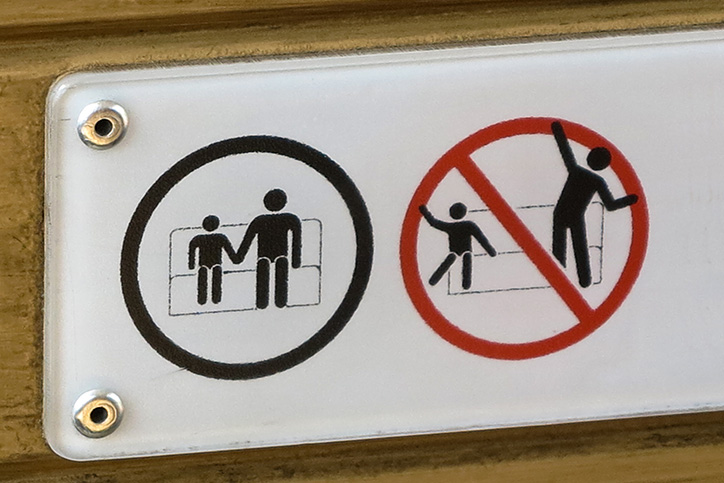A fun day at an amusement park with friends and family is always a memorable experience for guests. Great amusement parks set themselves apart from others by creating a themed experience for guests. The rides, attractions, gift shops, and even the food set the stage for a unique and lasting impression.
Strategic use of signage is one of the best ways to reinforce an amusement park theme. Owners benefit from utilizing safety signage to carry their theme while at the same time, instilling the importance of safety.
Benefits of safety signage for amusement parks
Safety signage warns guests about potential hazards and reduces the risk of injuries and lawsuits. Considering there are over 400 amusement parks nationwide that see over 375 million guests annually, it’s not surprising that getting everyone’s attention is a challenge.
Smart amusement parks are leveraging safety signage to grab guest’s attention with thematically designed signs that engage and communicate critical safety messaging at the same time.
For compliance purposes, amusement parks must post appropriate warnings about risks associated with rides and attractions. They must also inform guests about age, height, and restrictions, as well as warning about medical conditions.
Amusement parks that fail to post proper signage, risk exposing guests to preventable injury and open themselves to costly litigation, bad publicity, and negative guest reviews.
Understanding amusement park liability
- Assumption of risk – Depending on the state, guests may assume the risk of a dangerous ride by voluntarily participating in an activity that is known to be dangerous.
- Negligence – Amusement parks can be held liable for negligence if they fail to act with reasonable care. This may include failing to post proper signage to warn guests about risks, failing to provide clear instructions, or failing to operate the ride properly.
Minimize the risk of guest injury with signage
Guests can find many signs throughout an amusement park that serves a variety of purposes. Typical sings guests encounter and engage with include:
- Information signs
- Park maps
- Direction signs
- Educational / Interpretive signs
- Safety signs
Safety signs that point out potential hazards should be displayed in the activity area of an attraction, and the restrooms.
Signs for directions, wayfinding, safety, and parking help guests navigate the park, find restrooms, and other amenities. These signs should be strategically placed in conjunction with safety signs to maximize safety signage benefits.
Safety signage should be posted for guests and employees. Employees need signs to help them properly operate rides, instruct guests, and inspect rides.
Strategic use of words and images create impactful signs
Regardless of a guest’s language or other communication barrier, amusement parks are responsible for effectively communicating to all guests.
A 2016 case highlights this. A 38-year-old father suffered a fatal heart attack on the “Skull Island: Reign of Kong” ride at Universal Orlando. The man had a history of heart problems and did not speak English. The wrongful death lawsuit claimed that the amusement park was negligent for failing to post warning signs in Spanish.
This case highlights the risk involved when amusement parks don’t update signs with additional languages and graphics.
Safety signs update considerations:
- Include internationally recognized graphics
- Use creative imagery
- Intense rides should use more signage
- Digital signage is an exccelent supplement to traditional signage
The bottom line is amusement parks must face the reality that they can be held responsible for failing to warn guests about risks adequately. In some states, if an amusement park can show a guest voluntarily assumed the risk, they will not be held liable. The safest way to protect an amusement park wherever the location is with adequately designed and placed safety signage. Whether it’s a traveling carnival, family entertainment center, amusement park, water park, or skating center, McGowan can protect you.


